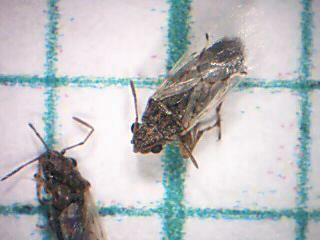False Chinch Bugs: Unmasking the Pests In California Agriculture
False chinch bugs (Nysius spp.) may sound harmless, but these small, gray or brown insects can wreak havoc on California’s agriculture and ecosystems. Often mistaken for their true chinch bug counterparts, these minuscule creatures measure between 1/8 to 1/4 inch in length and possess wings that enable them to disperse easily. In this article, we’ll dive into the world of false chinch bugs, understanding their habitat, lifecycle, impact, and how to effectively manage their presence.
Habitat and Range:
Native to arid regions of the southwestern United States, including California, false chinch bugs thrive in a variety of environments, from deserts and grasslands to agricultural areas. Their adaptability to different conditions makes them a persistent concern for farmers and gardeners.
Lifecycle and Behavior:
False chinch bugs lay their eggs in the soil, and the nymphs undergo several growth stages before maturing. This rapid reproduction can lead to population surges that pose a significant threat to plants, causing wilting and damage to crops and gardens. Understanding their lifecycle is crucial to managing their numbers effectively.
Impact on California:
While false chinch bugs themselves are not dangerous to humans or pets, their exponential growth can have devastating consequences for agriculture. Infestations have been reported by farmers and gardeners alike, resulting in considerable losses. The damage they inflict by feeding on plant sap can harm both crops and gardens.
Are False Chinch Bugs Harmful?
In small numbers, false chinch bugs pose minimal threats, but when their populations explode, they become a nuisance in agriculture and horticulture. Effective management is essential to prevent economic and ecological damage in California. This requires constant vigilance and proactive control measures.
Control and Management:
To mitigate the impact of false chinch bugs, consider the following strategies:
- Regular Monitoring: Keep a close eye on your crops and gardens to detect any signs of infestation early.
- Cultural Practices: Implement practices like crop rotation and weed management to disrupt their lifecycle.
- Natural Predators: Encourage the presence of beneficial insects like ladybugs and parasitoid wasps, which can help control false chinch bug populations.
- Insecticides as a Last Resort: Only use insecticides as a last resort, and do so judiciously to minimize harm to beneficial insects and the environment.
Conclusion:
False chinch bugs are a legitimate concern in California, and their effective management is vital to minimize their impact on agriculture and ecosystems. Whether you’re a farmer, gardener, or simply someone interested in preserving California’s natural beauty, staying informed and employing integrated pest management techniques are crucial steps in dealing with this insect invasion. Don’t be fooled by their small size; the threat they pose is very real.

